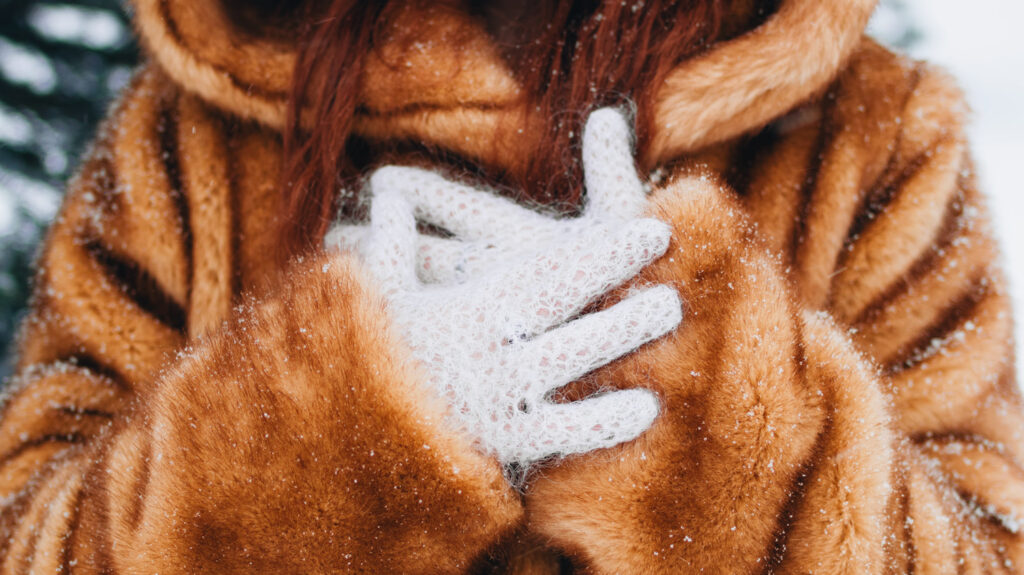Fur is falling out of fashion. It’s outdated and consumers agree. In the UK, 93 percent of Brits do not wear animal fur, according to a poll by animal welfare organization Humane Society International. In the U.S., the value of mink hide dropped by more than $59 million in 2019. And globally, fur auctions are selling less pelts.
But innovations in textiles have given rise to vegan fur alternatives, proving faux is the future of fashion. And for good reason.

The impact of fur on the environment and animals
Fur can come from a variety of animals; minks, rabbits, foxes, chinchillas, and raccoon dogs are just a few examples. And animals like bobcats and weasels can also be caught in the wild.
According to animal rights group PETA, about 85 percent of the fur industry’s fur comes from animals raised in captivity on fur farms. These animals are often kept in deplorable conditions, packed into cramped cages to maximize profits, with inadequate access to food and water. And to ensure their pelts are removed intact, the animals are often slaughtered using horrific methods, including electrocution, gas, poison, or a broken neck.
Aside from animal cruelty, fur’s impact on the environment is far-reaching. The ecological footprint of raising the 100 million animals that are farmed each year, as well as tanning and dyeing the fur, is vast: Abundant amounts of land, water, and energy are needed. And in addition to being highly resource-intensive, the industry is pollutive. Animal pelts are often dipped in toxic chemicals like formaldehyde—a classified carcinogen that can cause irritation of the skin, eyes, nose, and throat—to preserve them. The use of these chemicals, as well as animal waste, often pollutes the surrounding environment and waterways.
And on top of this, fur farms spread diseases. Due to the fact that mink are susceptible to respiratory viruses, COVID-19 outbreaks have greatly impacted hundreds of mink fur farms across Europe and North America. As a result, countries resorted to culling millions of mink in order to stop the spread of the disease. Following Denmark’s order for a mass mink cull last year, Kopenhagen Fur—the world’s largest fur auction house—revealed it would be closing its doors for good in the next two to three years.
The future of (faux) fur
Thankfully, we don’t have to contribute to animal cruelty and environmental degradation for the sake of fashion. Many brands are now eschewing animal fur in favor of more ethical materials.
In 2019, British designer Stella McCartney debuted a sustainable faux fur called Koba. The recyclable material features plant-based materials, like corn. “I think that fashion is about the future, and you shouldn’t have to sacrifice your style for sustainability,” McCartney said. “I wanted to try to develop a faux fur that was just more sustainable.”
A wide variety of other fabrics can be used to simulate animal fur, such as hemp and polyester. Scientists have even turned to lab-grown fur to disrupt the luxury fashion industry. Amsterdam-based biotechnology startup Furoid created the world’s first in vitro hair follicle linked to collagen, which can be used to make fur and wool without killing animals. While it’s technically not vegan (researchers cultivated stem cells from various animals), the cultured material does provide a sound alternative to fur obtained by slaughter.
Luxe fashion designers aren’t the only ones ditching fur. The move away from fur is happening en masse with countries around the world passing bans against the industry. And even some of the biggest outerwear and sportswear brands are making moves away from fur. Here are some of the biggest bans of 2021.


